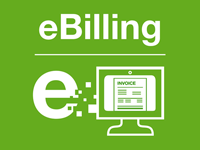4 Ways to Boost Consent for Email Billing
Getting customers to opt-in to email communications is a priority for many companies as a means to increase revenue. However, email also serves its purpose as a fantastic cost reduction mechanism when converting customers to go paperless. Now, companies are looking for ways to get their customers to convert from paper bills to eBilling. What better way to do that, than to send email bills instead? In this blog post, we’ll focus on getting consent via email, to maximize customer take up of email as a billing channel.
The key to continued success it to leverage every customer touch point to create that paperless opportunity, but today we want to focus on arguable the top opportunity – the proactive consent email.
We’ve talked before about email collection strategies (check out my previous blog here), so the next step is actually using those emails collected to get customers to go paperless. Sending a proactive consent email generally results in a fairly quick consent rate of 20% - 35% as a percentage of emails opened. This depends on a few factors, in addition to the basics of email testing, which will give you the highest open rates:
- One-click to consent: The biggest deterrent to going paperless is a lengthy registration process on a company’s web-site. Show the customer you know who they are by displaying partial data on their account in the consent email, and keep their activity to a single click on a call to action button or link. Remember that each additional step will reduce that subscribe rate.
- Design with consent in mind: Don’t over-complicate the email. The call to action should be the first thing that the customer sees when they scan the email body. Using too much text, too many links or other opportunities and too many paragraphs will take away from the only action that you want the customer to take, which is to go paperless. Where possible, use links in the pre-header or copy of the email body too.
- Optimize the process for mobile: Mobile usage is rapidly increasing and this will not slow down any time soon. Many companies are seeing over 50% of their email bills and consent emails being viewed on a mobile device. Nothing will be a bigger deterrent than a lengthy registration process for customers who are trying to go paperless from their smartphones. The single call to action in a simple mobile optimized design caters to mobile users.
- Develop a triggered email consent strategy: This is important to implement if you aren’t willing to leave potential paperless subscribers out (which you shouldn’t be!). A client recently implemented a triggered email consent process, and after just two additional emails sent to customers after the initial email the results are:
- The first triggered message currently generates a 21% subscribe rate
- The second triggered message currently generates a 19% subscribe rate
Consent emails should never be a one-and-done process. Testing, tracking, monitoring, changing and re-testing are all integral to a successful paperless strategy and gaining consent for email billing.

 How to resolve AdBlock issue?
How to resolve AdBlock issue? 